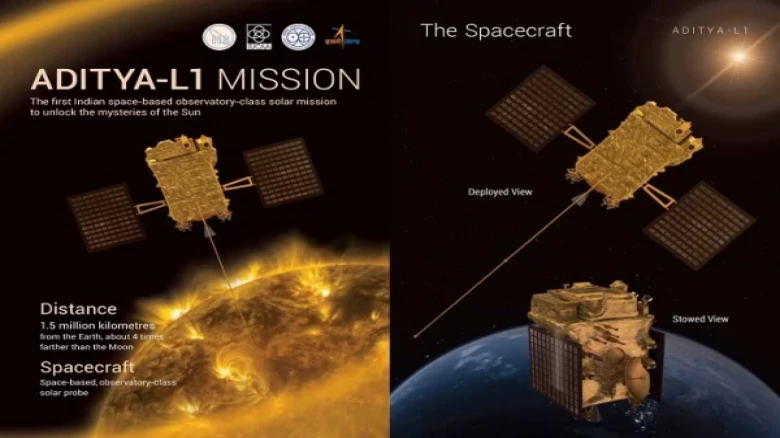National

ISRO is preparing to launch the Aditya-L1 into new terrain for India, the country's maiden solar mission...
Digital Desk: The Indian Space Research Organisation (ISRO) is gearing up for its next space adventure after successfully landing the Chandrayaan-3 spacecraft on the moon's South Pole. This time, ISRO is preparing to take the Aditya-L1, India's first solar mission, into further unexplored terrain.
The scheduled launch of India's first solar exploration mission is set for Saturday at 11:50 IST from the Sriharikota launch pad, with the launch rehearsal and vehicle internal checks are all completed.
The PSLV-C57 will launch the Aditya-L1, India's first solar space observatory. It will carry seven separate payloads for a detailed study of the sun, four of which will view the sun's light and the other three will measure in-situ plasma and magnetic field properties.
The Visible Emisison Line Coronagraph (VELC), the most difficult and largest payload on Aditya-L1, was integrated, tested, and calibrated at the Indian Institute of Astrophysics' CREST (Centre for Research and Education in Science Technology) campus in Hosakote in collaboration with ISRO.
Aditya-L1 will be launched into a halo orbit around Lagrangian Point 1 (or L1), 1.5 million kilometres from Earth in the direction of the sun. It is expected to complete the journey in four months.
Because of its strategic location, Aditya-L1 will be able to continually watch the sun without being inhibited by eclipses or occultation, allowing scientists to research solar activity and their impact on space weather in real-time.
Furthermore, the data from the spacecraft will aid in identifying the sequence of processes that lead to solar eruptive events, contributing to a better understanding of space weather drivers.
During a total solar eclipse, we observe the sun's atmosphere, it is also called the corona. According to the Bengaluru-based Indian Institute of Astrophysics, a coronagraph, such as the VELC, is equipment that blocks off the light from the sun's disc and can thus image the much fainter corona at all times.
The key objectives of India's solar mission are to investigate the physics of the solar corona and its heating mechanism, solar wind acceleration, coupling, and dynamics of the solar atmosphere, solar wind distribution and temperature anisotropy, and the origin of Coronal Mass Ejections (CME) and flares, as well as near-Earth space weather.
Leave A Comment